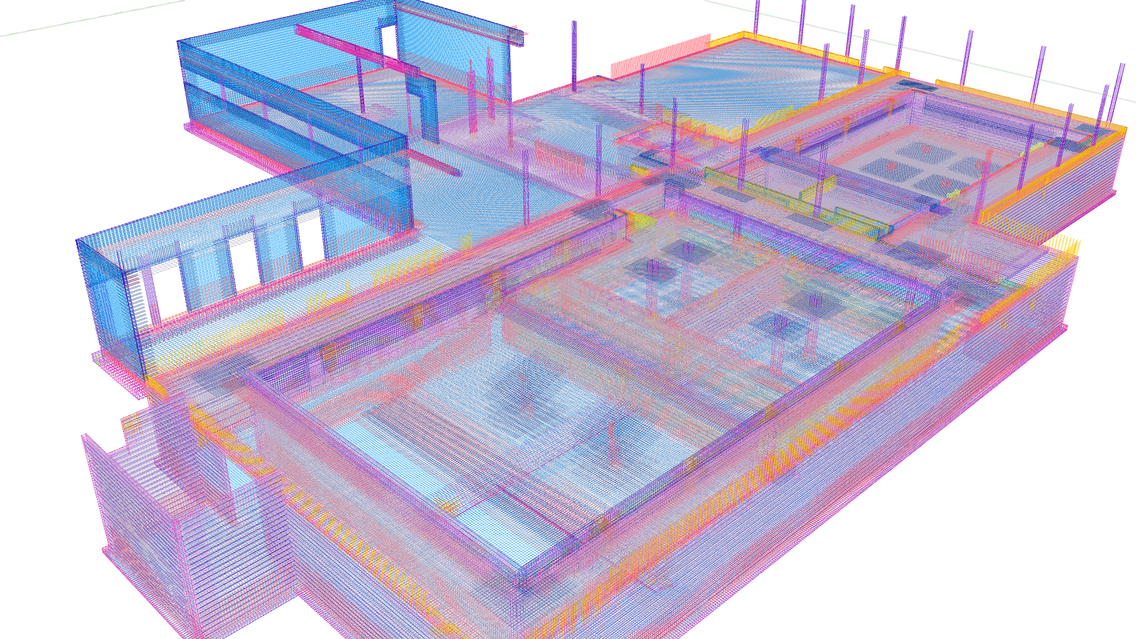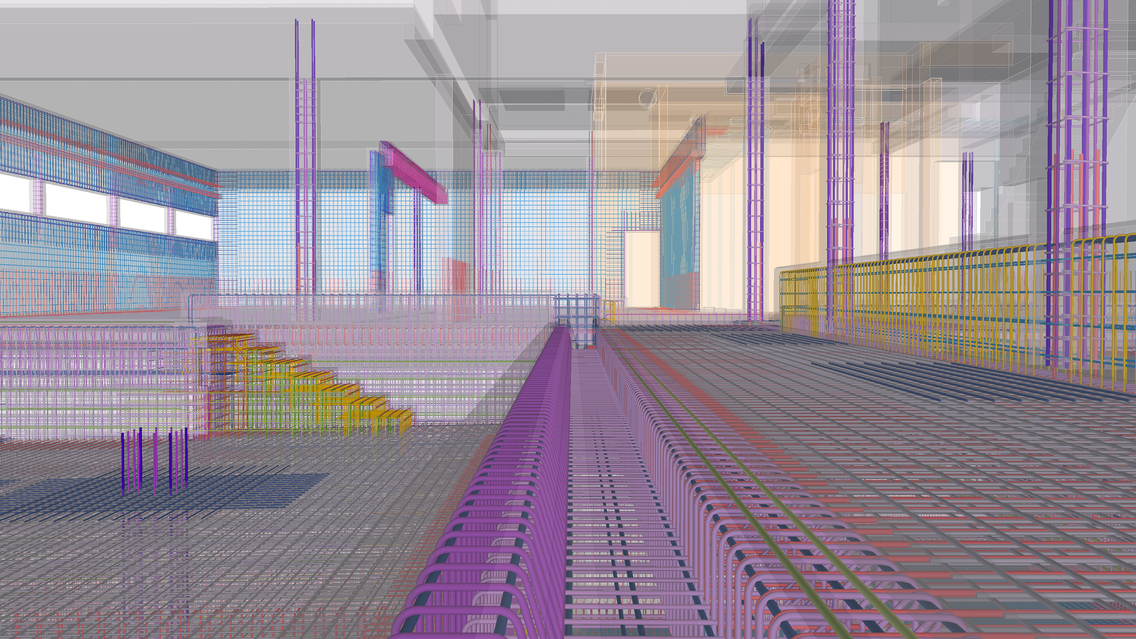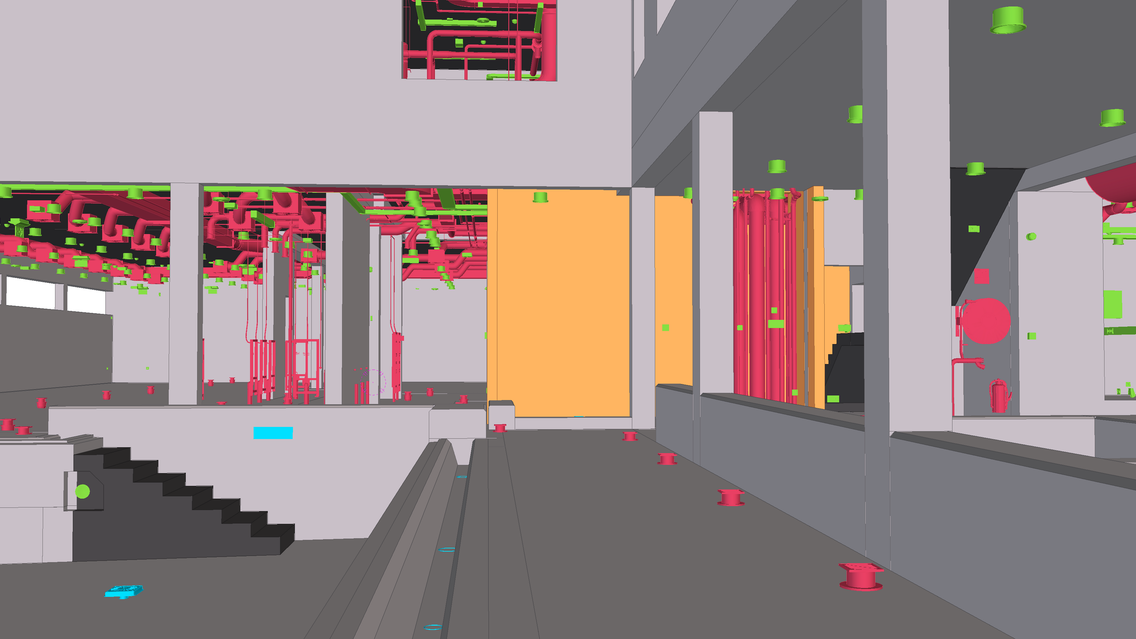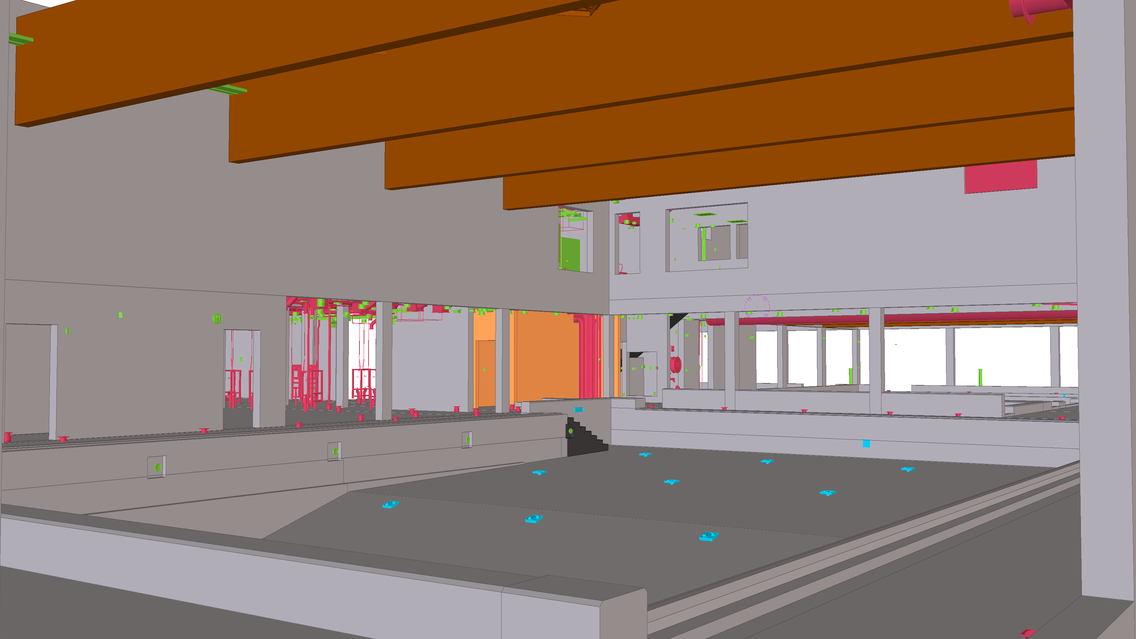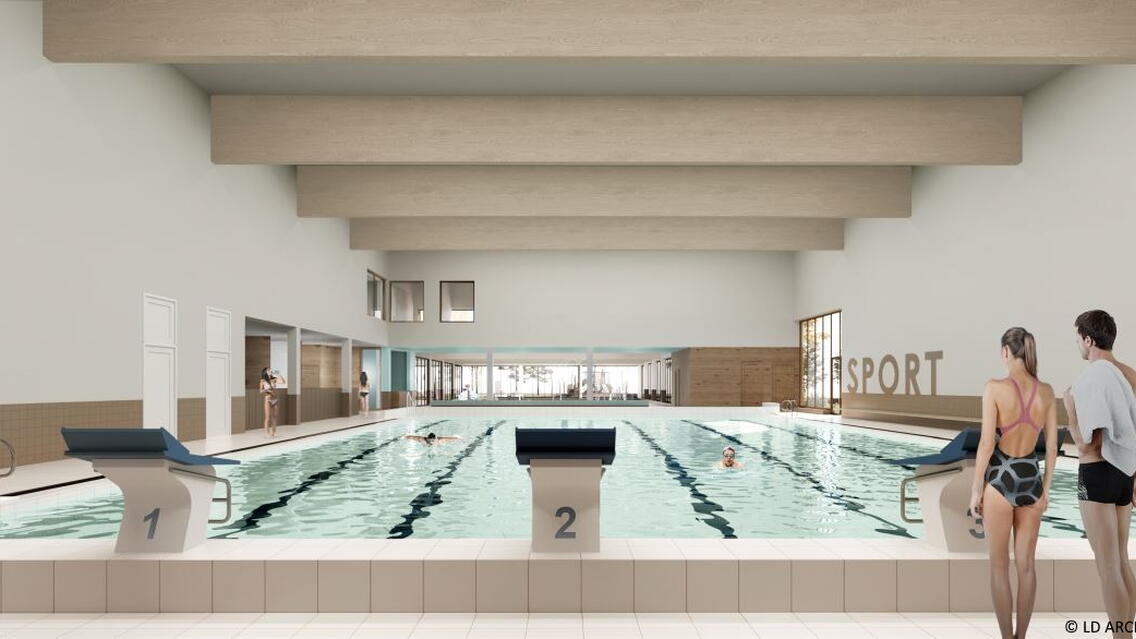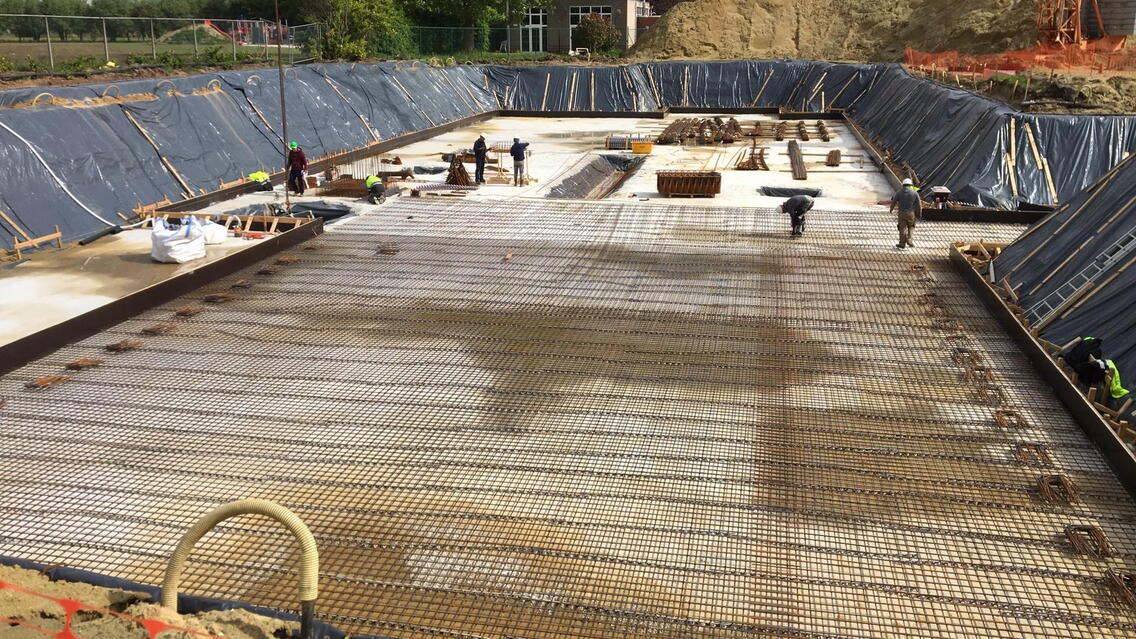New sports infrastructure will give swimming pleasure to the inhabitants of the municipalities of Aartselaar, Hemiksem and Niel
The existing swimming pool on the sports field of the municipality of Aartselaar is so outdated that the need arises to build a new one.
Commissioned by the intermunicipal association IGEAN, this new swimming pool will be built on the same sports site, after which the existing pool will be demolished. The new sports infrastructure will give swimming pleasure to the inhabitants of the municipalities of Aartselaar, Hemiksem and Niel.
With this design, Tractebel faced a multi-disciplinary assignment. A project that requires an integrated BIM approach. From the start, Tekla Structures was used as modeling software for the structure (both concrete, steel and wood), but also as a coordination model in which the various 3D discipline models were brought together. Amongst others, 3D IFC models of architecture and various techniques (HVAC, electricity, plumbing, sewerage and water treatment) were loaded into the model.
This approach allowed all interfaces between the various design disciplines to be mapped out clearly. It soon became clear that the various technical disciplines would play a prominent role. The size and complexity of the piping network in a swimming pool are considerable. This created the need to provide the necessary openings in the structure as early as the design phase. The technique designers supplied IFC models with dummy elements that defined the openings in size and position. These dummy elements were converted into native Tekla objects, allowing for a flawless installation of the right openings in the right place.
Clash detection was done in the design phase, avoiding problems during execution. The 3D model was also used intensively by the design team as a communication and visualization tool, allowing stakeholders to follow the design closely.
Regarding the structural discipline, the complete formwork and reinforcement were elaborated in 3D. Deliverables such as formwork plans, bills of quantity, reinforcement plans and bending schedules could then easily be generated from the model, so that the design was ready for execution. A 3D model of formwork and reinforcement ultimately saved time for the contractor as well.
Finally, we can conclude that coordinating the models of the various disciplines requires a little more effort and work in the design phase, but that this is compensated for in the execution phase.
